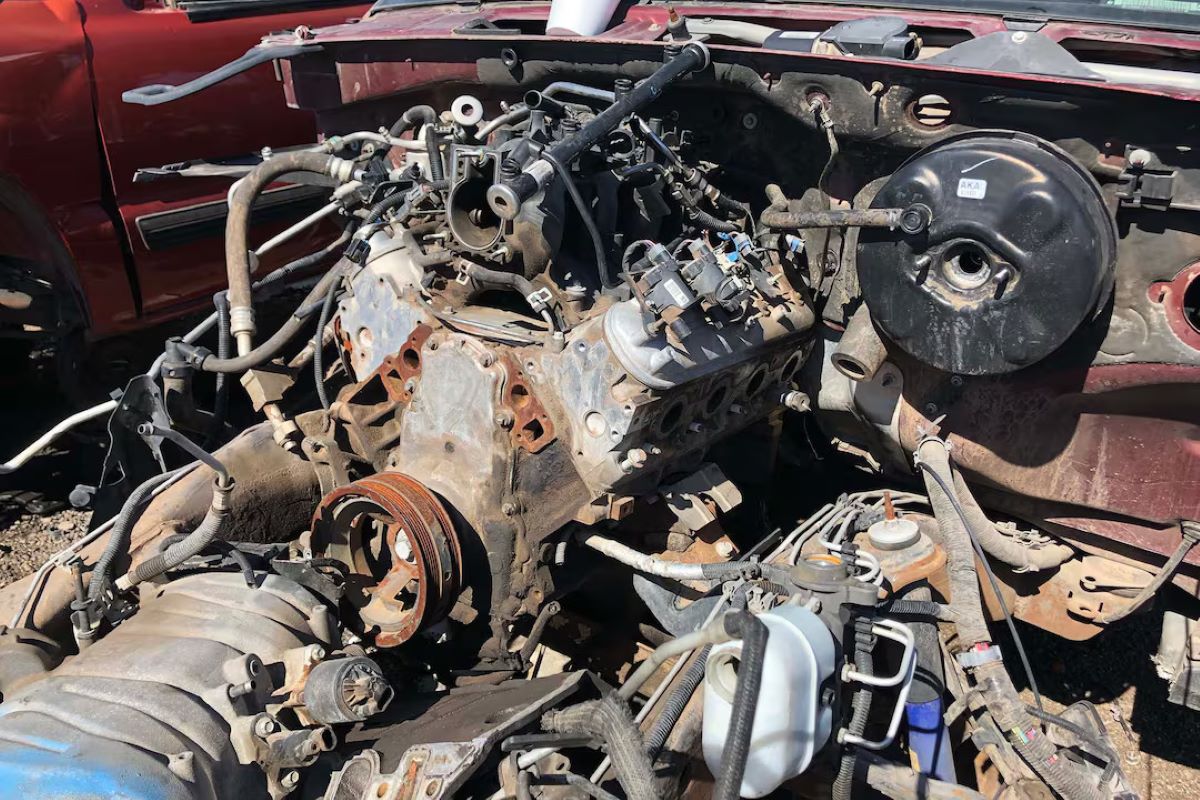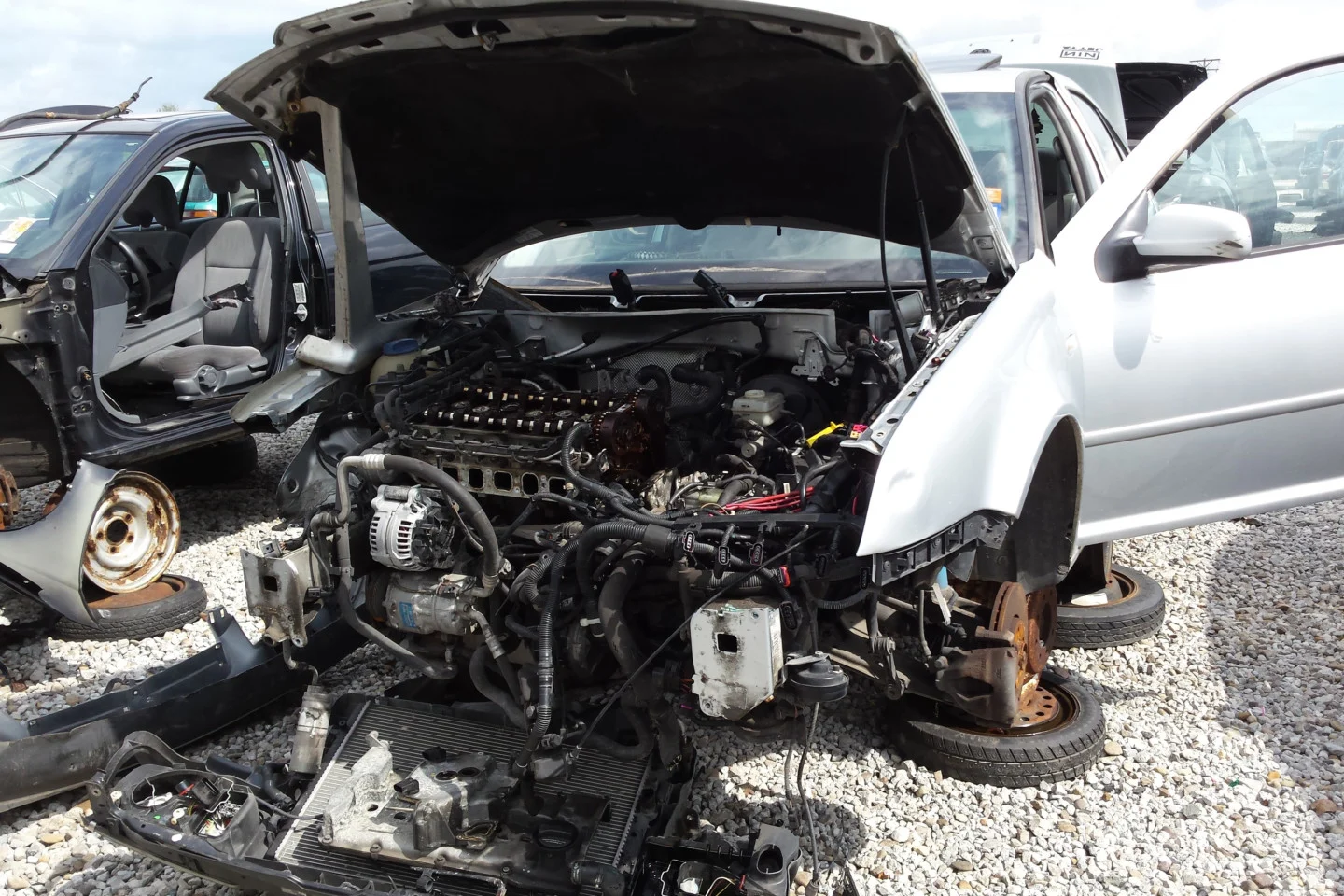As a car enthusiast working within a tight budget, I have a deep appreciation for junkyards. Not just any junkyard, though it has to be one where you can pull your own parts.
Fortunately, here in the Midwest, we have several Pull-a-Part locations, and I’m lucky enough to have one nearby. For those of us who drive older vehicles regularly or occasionally, it’s been a true blessing. Plus, it’s a great way to spend an afternoon when I’m in the mood to browse.
My passion for junkyards escalated when a Pull-a-Part opened right in my hometown during the mid-2000s. Not long after buying my MK4 VW GTI with the VR6 engine, it started giving me trouble.
One night, after driving home from work, I noticed a P0171 system lean code flash on the dashboard. I hooked up my scanner and traced the issue to a malfunctioning Mass Airflow sensor.
The idle was rough, and the car lacked power. I thought I’d solved the issue by ordering a generic MAF sensor from eBay.
Later, I encountered a more serious problem. My nearly stock GTI had suffered a cam solenoid failure. The repair cost from the dealer would have been $1,600, or $1,200 for a new cam bridge through eBay. Luckily, I sourced the needed parts from a junkyard for just about $100.
Although the new MAF sensor seemed to resolve the trouble code, something still felt off. The idle remained unstable, and the fuel trims fluctuated oddly.
Before long, another code popped up this time related to cam timing. That raised a red flag, so I dove into diagnosing the issue. It became clear that the intake cam solenoid had failed.
Unfortunately, the only available fix was to replace the entire cam bridge through the dealership, which came with a hefty $1,200 price tag. I figured there had to be a better way. Pull-a-Part to the rescue.
A fellow MK4 GTI owner happened to be at the local Pull-a-Part and gave me a call after spotting a VR6 24v Jetta. He encouraged me to come check it out, confident it had what I needed.
Sure enough, it was a 24-valve BDF VR6 model and came equipped with both cam solenoids. I managed to remove one of them in about 20 minutes. I also grabbed the ignition coils, since they were the updated type, and I figured they’d be good insurance. For good measure, I picked up the ECU, too.
This is the donor BDF VR6 I found at the junkyard with the parts I needed to get back on the road. I removed the parts like a surgeon but wished I took more.
All in all, the haul cost me about $100. I should’ve grabbed the MAF while I was at it, but I had already picked up a used factory MAF sensor on eBay for $50. I wanted to compare a factory MAF to the generic one.
That decision proved worthwhile the factory sensor truly brought the car to life. With the new cam solenoids installed and the correct MAF in place, the engine performance dramatically improved.
Whenever I need parts for my GTI or any of my other cars, Pull-a-Part is my first stop. My driver’s side window stopped working recently, prompting another trip to the yard.
This time, I was also curious about other vehicles and their engines for research purposes, of course. I asked the yard manager how much a complete engine would cost, and he told me around $280, depending on whether it’s gas, diesel, or has more than ten cylinders.
That’s a pretty fair price, though you do need to thoroughly inspect the engine’s condition. After all, there’s a reason it ended up in a junkyard.
While hunting for a working window switch for the VW, I came across a number of engines that would be ideal for future project builds. (Not that I’m planning anything.
One of the first cars I saw upon entering the yard was a Saab 9-5, which piqued my interest. I’ve previously owned a few Saab 900s but never dabbled with the GM-era models.
This particular 9-5 had a 2.8-liter GM-built turbocharged V6. While not very powerful in its low-pressure configuration, the high-pressure version can be tuned to exceed 300 horsepower with ease.
The GM/Saab 2.0T is based on the Ecotec 2.0-liter and has loads of tuning potential. With some moderate tuning and modifications, these can put out a reliable 270-280 horsepower.
Right next to the 9-5 was a 2007 Saab 9-3 featuring the 2.0T engine—also based on GM’s Ecotec platform. The 2.0Ts can become real performers with just a tune.
The larger “T” 2.0T variant can deliver up to 270 horsepower reliably with only minor hardware upgrades. I’ve spotted several 9-3s in reasonable condition for under $4,000.
Lately, I’ve been wondering if it’s time to trade the VW for something a bit more age-appropriate. As a Gen-Xer, maybe I should consider a more “mature” vehicle. But on my freelancer’s budget, that limits my options.

This Saab 9-5 with the 2.8L GM-built V6 turbo is the low-psi turbo model that didn’t make much power. The high-pressure V6s that produce 12 psi can easily make over 300 hp with a stage 1 tune.
The engine that intrigued me most, unsurprisingly, came from a 2001 VW Passat. It featured a 1.8T 20-valve paired with a 5-speed manual transmission.
That got me thinking about my late dad’s 1974 MGB, which has been sitting idle in the garage ever since he began upgrading it to run on unleaded fuel.
He had removed the head to install hardened valve seats but never completed the job before he passed. The stock 1800cc engine is underwhelming, but dropping in a 1.8T would breathe new life into it.
Volkswagen’s 1.8T 20-valve is one of the most ubiquitous and tunable engines in the company’s history. It essentially helped launch the popularity of turbo four-cylinder performance.
I’ve even considered swapping out my VR6 for a 1.8T and pairing it with my six-speed transmission. While the VR6 sounds fantastic and runs smoothly, aftermarket support is limited.
Basic upgrades like intakes and exhaust systems barely yield performance gains. The beauty of the 1.8T is its versatility it’s as swappable as an LS engine and has a massive parts market.
With just a remapped ECU, I’ve seen these engines hit 300 horsepower. Of course, any engine sourced from a junkyard will require a full teardown and rebuild.
You can also install a forged 2.0L TFSI crank to bump displacement to 2,008cc. Pair that with a larger turbo, and you’d have an incredibly exciting setup for a 2,300-pound car.
Some notable finds during my Pull-a-Part trip included a surprisingly large number of LS engine options. There were Chevy Avalanches with 5.3-liter engines and 4L60E transmissions ideal for LS swaps.
I came across Silverados sporting 4.8-liter engines and even found a heavy-duty Silverado housing an LQ4 6.0-liter LS.
Over in the Ford section, I spotted a 2000 Grand Marquis with a 4.6-liter Modular V8 and thought about our Boring Project 4.6. I also found a few 5.4-liter Triton engines and an old Ford 300 straight-six.
These days, more enthusiasts are building up the 300 I6 as a way to break from the mold. I even saw someone machine LS cylinder heads to fit the 300 for a wild result.
Junkyards are a haven for budget-minded builders like me. The longer I wandered through the rows, the more ideas filled my head.
Eventually, though, reality chimed in with a reminder: “Stick with your projects, bro.” Still, that won’t stop me from making regular trips to the yard in search of internal-combustion inspiration.
For enthusiasts looking at affordable four-cylinder options, the Honda B-series engines (especially the B18 and B20 variants) are common junkyard finds that respond extremely well to rebuilding.
Whether you’re going for a high-revving naturally aspirated setup or planning to boost it, the B-series platform is both versatile and stout. Many of these engines survive long after the body has rusted away, and with their light weight and solid performance base, they’re still a smart choice for racers and builders alike.
The Jeep 4.0-liter inline-six, another junkyard hero, is beloved in the off-roading world. Known for its low-end torque and impressive durability, the AMC-derived 4.0 often ends up in salvage yards due to electrical or transmission failures in the Jeeps they came from—not because the engine itself gave out.
With a simple rebuild, these engines can handle trail abuse and daily driving for years to come. Rebuilt 4.0s are frequently dropped into Cherokee or Wrangler projects to extend life and performance on the cheap.
Of course, success in rebuilding a junkyard engine depends on more than the engine model alone. A proper rebuild involves thorough inspection, careful machining, and a willingness to replace key wear items—pistons, bearings, seals, gaskets, valves, and timing components.
If you’re smart about your donor selection and don’t cut corners during the rebuild process, many of these engines will not only run again—they’ll thrive.
In an age when new engines are often complex, expensive, and locked behind dealer-only diagnostics, rebuilding a junkyard engine offers something refreshingly old-school: the satisfaction of wrenching, saving money, and bringing forgotten iron back to life. With the right knowledge and a little elbow grease, yesterday’s trash can become tomorrow’s powerhouse.

